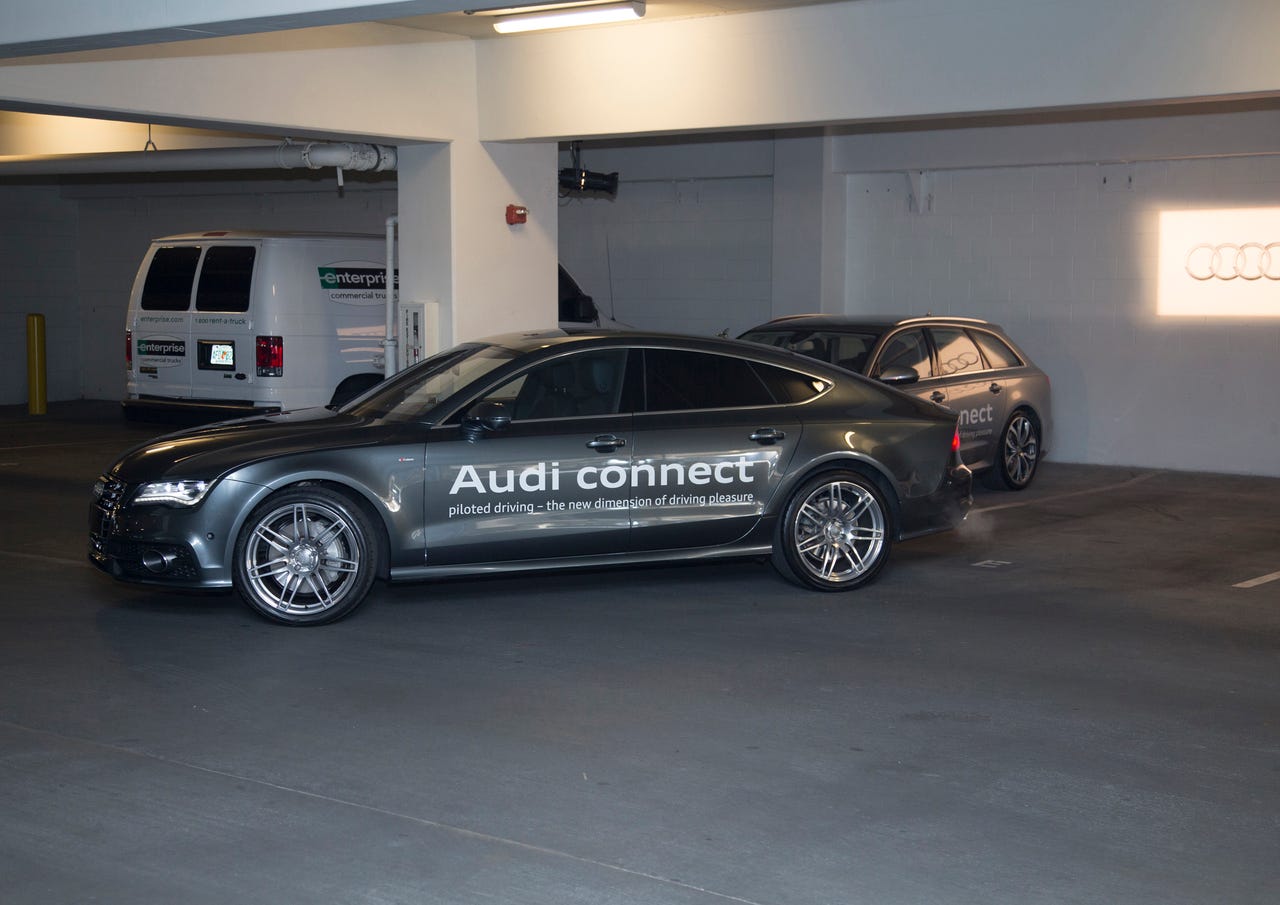Audi's self-parking car: What's stopping the tech getting on our roads?

Car manufacturers aren't shy of showcasing their forthcoming premium features at trade shows like last week's CES or this week's Detroit Auto Show. It's especially true of Audi, the German car maker whose slogan 'Vorsprung durch Technik' translates into 'Leap ahead through technology'.
For Audi, one technology with which it hopes to leap ahead is a local Wi-Fi hotspot and integrated 3G/4G for internet access for passengers while on the road.
But the most impressive technology-led iniative for the company is still a way off: a self-parking car, or, as Audi calls it, Piloted Parking.
The idea behind it is rather simple: you exit your vehicle, pull out your smartphone, click a button and the car drives itself off to a parking spot at a nearby garage. What at first sounds like a mixture between Knight Rider's KITT and something James Bond's Q might create is actually technically possible. Audi demonstrated the feature last week at CES in a secluded area of a Las Vegas hotel.

The car uses an array of internal and external sensors to get its position: Audi claims they can be as accurate up to 10cm, but only if they have access to special laser sensors inside the parking structure (four of those scanners had been set up in the parking structure to support the demo). These might be redundant in the future, as the car maker is working on a laser sensor that will be integrated in the car itself (think the sensor tower on top of Google's self-driving car, but completely integrated in the chassis).
The self-parking system also needs access to the car park's management system, in order to find and allocate a free parking space and transmit the route to the car. Since most modern car parks have more than one level or are underground, GPS-based positioning is not really an option, so instead the management system uses Wi-Fi to transmit the route.
The legislation roadblock
Cars are obviously capable of finding their own way around already, so what keeps the autonomous automobile from completely taking over our streets? Simple: The 19 Convention on Road Traffic, drafted in Vienna in 1968 (PDF), which doubles as a UN treaty. Article 8 of the treaty contains the vital point: "Every driver shall at all times be able to control his vehicle or to guide his animals". Countries like Germany or Austria ratified the agreement and incorporated it into their local laws. Other countries, such as the UK or Japan, signed the treaty but didn't ratify it completely. The US didn't sign the treaty at all, however - making it possible to drive cars autonomously in California and Nevada.
Another big problem is liability. Who is responsible if an autonomous car is involved in an accident? The owner, the manufacturer or someone else? While Google's self-driving cars were able to complete more than 300,000 miles without an accident, drivers and insurers still need to plan for the possibility.
The third issue comes from the drivers themselves. Imagine you've invested in a premium car, including a nice, powerful engine, and then that car tells you to relax, it will take over – not all drivers would welcome ceding control of their vehicle to the vehicle itself.
Audi's solution to that is rather simple: "The car should only take over if the driver is OK with it or if the current driving situation is an annoying task. That's why we're focusing our autonomous driving scenario on situations like parking or traffic jams. When I want to have fun, I drive myself," Ricky Hudi, Audi's chief executive engineer, electrics and electronics told ZDNet. Another Audi spokesman agreed: "We need to build up confidence. The driver should be able to trust the car and to delegate tasks that bore him or her."
Despite the problems facing self-driving cars, Hudi is confident that they will be a reality in this decade. Early adoption will be in countries like Japan, where the growing traffic is presenting a problem. The replacement cycle of cars has its part to play too: with drivers only replacing their cars every seven to 10 years, it may be some time before self-driven cars are a common sight on our roads - even if the technology is ready to leave the garage now.